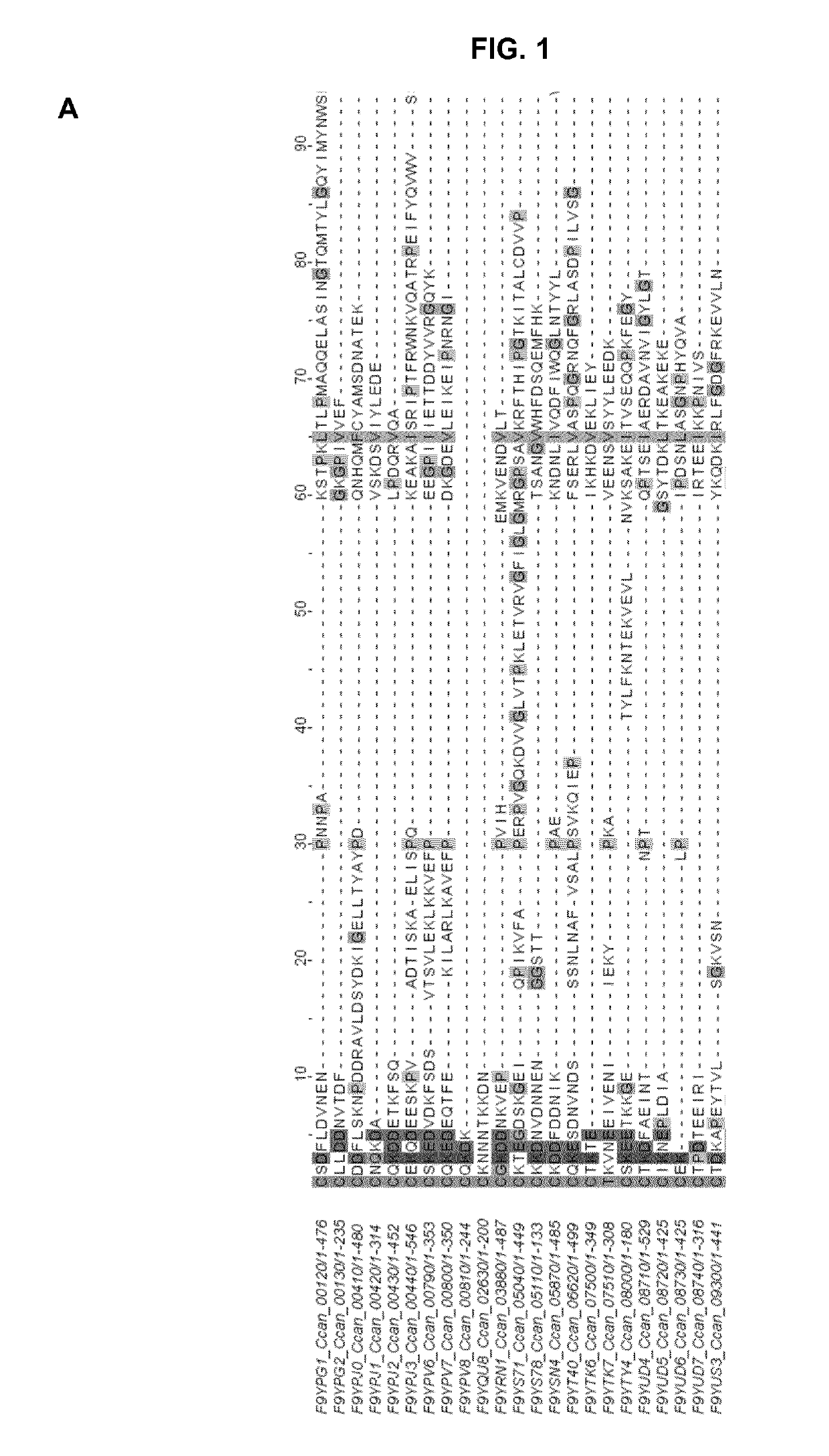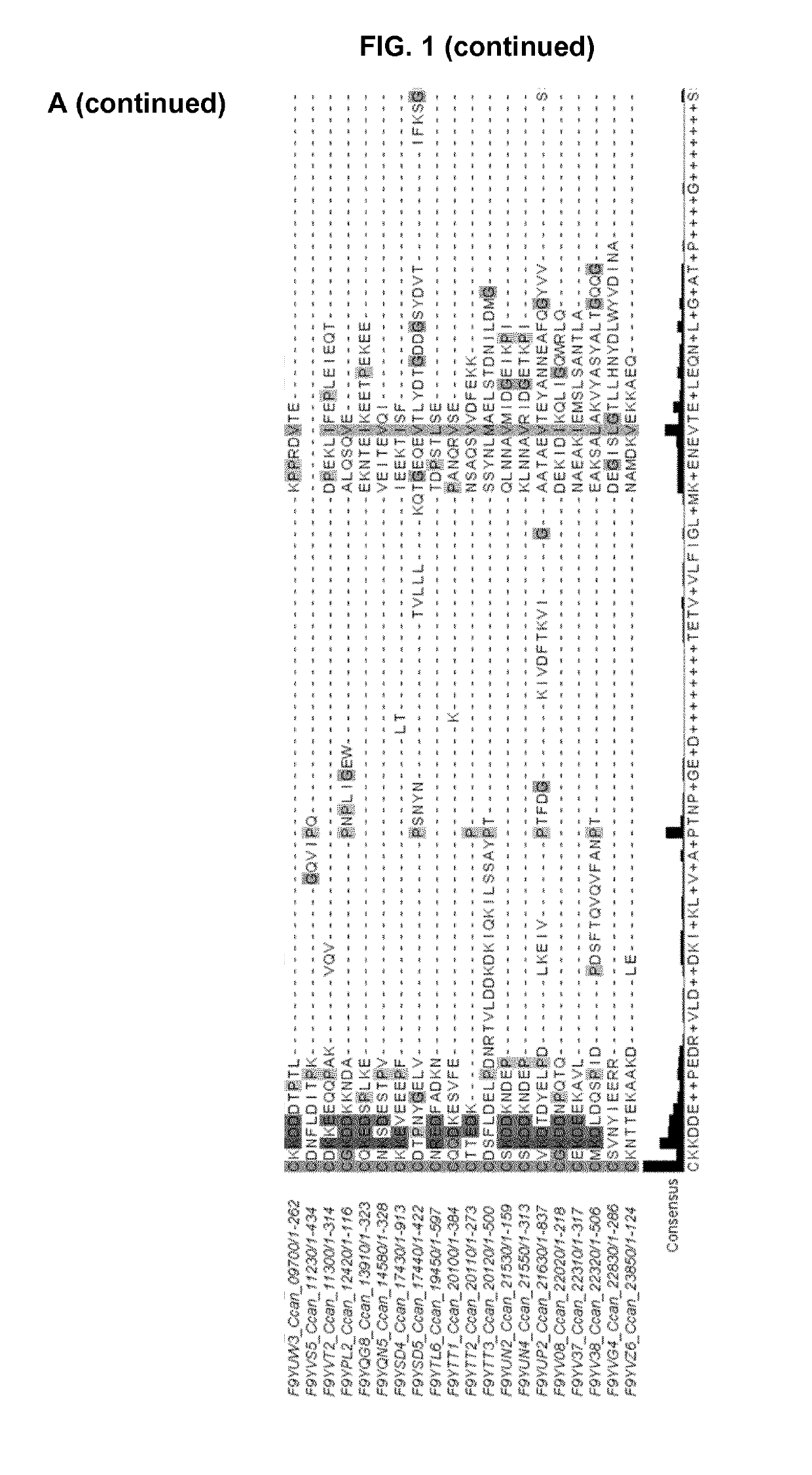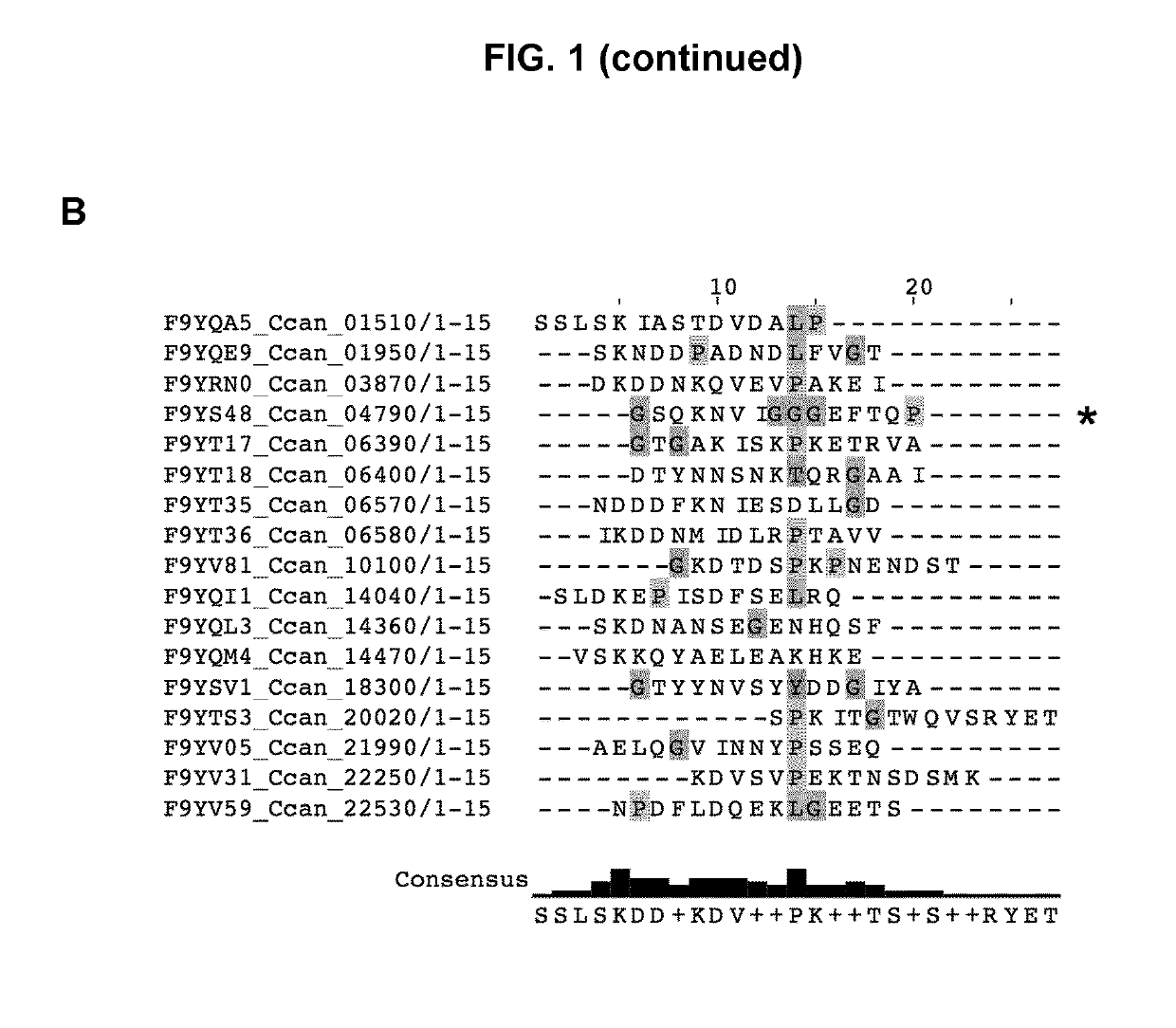Lipoprotein export signals and uses thereof
a technology of export signals and lipoproteins, applied in the direction of peptide sources, lyases, drug compositions, etc., can solve the problems of destabilization of cell envelope integrity, growth defects, and limited size of foreign proteins to be displayed on the surface of phages, and achieve high efficiency and stability
- Summary
- Abstract
- Description
- Claims
- Application Information
AI Technical Summary
Benefits of technology
Problems solved by technology
Method used
Image
Examples
examples
[0247]Materials and Methods
[0248]1. Bacterial Strains and Growth Conditions
[0249]Bacterial strains used in this study are listed in Table S1. Escherichia coli strains were routinely grown in lysogeny broth (LB) at 37° C. C. canimorsus strains were routinely grown on heart infusion agar (Difco) supplemented with 5% sheep blood (Oxoid) plates (SB plates) for 2 days at 37° C. in the presence of 5% CO2. To select for plasmids, antibiotics were added at the following concentrations: 100 μg / ml ampicillin (Amp), 50 μg / ml kanamycin (Km) for E. coli and 10 μg / ml erythromycin (Em), 10 μg / ml cefoxitin (Cfx), 20 μg / ml gentamicin (Gm) for C. canimorsus.
[0250]2. Heat-Inactivation of Normal Human Serum (NHS)
[0251]Ten ml aliquots of NHS (S1-Liter; Millipore) were thawed and heat-inactivated at 56° C. for 1 h. The Heat-Inactivated Human Serum (HIHS) was then dispensed into single use aliquots and stored at −20° C.
[0252]3. Construction of siaC and mucG Expression Plasmids
[0253]Plasmids and primers u...
experiment 1
entification of a Putative Lipoprotein Export Signal
[0269]In order to see if a specific amino acid motif would be responsible for the targeting of lipoproteins to the bacterial surface, the Inventors examined in detail the sequences of the 43 lipoproteins detected at the surface of C. canimorsus 5 (Manfredi, P., et al., The genome and surface proteome of Capnocytophaga canimorsus reveal a key role of glycan foraging systems in host glycoproteins deglycosylation. Mol Microbiol, 2011. 81(4): p. 1050-60). The Inventors first identified the SPII cleavage site using the LipoP software and then aligned the mature lipoproteins using MAFFT. Several residues seemed to be conserved throughout the protein sequences but did not appear to constitute a clear motif (data not shown). However, a lysine (K) residue followed by either an aspartate (D) or a glutamate (E) residue appeared to be conserved in close proximity to the N-terminal cysteine at position +1 (FIG. 1A). This was refined by a second...
experiment 2
quence Leads to Surface Localization of the Periplasmic Lipoprotein SiaC
[0270]To verify this hypothesis, the Inventors introduced the QKDDE (SEQ ID NO: 16) motif in the sequence of the C. canimorsus sialidase (SiaC) protein, an outer membrane lipoprotein previously shown to face the periplasm (Mally, M., et al., Capnocytophaga canimorsus: a human pathogen feeding at the surface of epithelial cells and phagocytes. PLoS Pathog, 2008. 4(9): p. e1000164 and Renzi, F., et al., The N-glycan glycoprotein deglycosylation complex (Gpd) from Capnocytophaga canimorsus deglycosylates human IgG. PLoS Pathog, 2011. 7(6): p. e1002118). To do so, the Inventors cloned in a C. canimorsus expression vector genes encoding either the wt SiaC, SiaCC17G that would not be acylated or SiaC+2QKDDE+6 carrying the hypothetical export signal instead of the wt residues 18 to 22 and the Inventors expressed these genes in a siaC deletion strain (FIG. 3A). The Inventors first verified that the expression of the thr...
PUM
 Login to View More
Login to View More Abstract
Description
Claims
Application Information
 Login to View More
Login to View More - R&D
- Intellectual Property
- Life Sciences
- Materials
- Tech Scout
- Unparalleled Data Quality
- Higher Quality Content
- 60% Fewer Hallucinations
Browse by: Latest US Patents, China's latest patents, Technical Efficacy Thesaurus, Application Domain, Technology Topic, Popular Technical Reports.
© 2025 PatSnap. All rights reserved.Legal|Privacy policy|Modern Slavery Act Transparency Statement|Sitemap|About US| Contact US: help@patsnap.com



